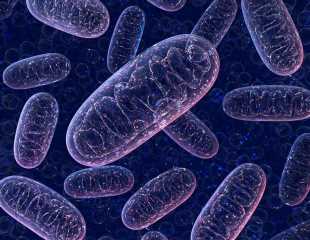New mouse model mimics the development of frailty in older adults

Reviewers’ Notes
Researchers at the Johns Hopkins University School of Medicine have developed a mouse model that successfully mimics the development of frailty as mammals — likely including people — get older. The model, described June 13 in The Journals of Gerontology, focuses on a biochemical pathway involving interleukin 6 (IL-6), an inflammatory protein long associated with the development of frailty, and how its activation affects mitochondria, the power plants of cells.
Frailty is a syndrome characterized by reduced strength, energy and activity, as well as lowered physical resilience among older adults. The difficult part of studying frailty is there are many factors at play at multiple levels, but we know IL-6 is a major player associated with lower muscle function, higher levels of collagen (a structural protein found in connective tissue like joints and tendons) and a drop in total mitochondria."
Peter Abadir, M.D., associate professor of medicine specializing in geriatric medicine and gerontology at the Johns Hopkins University School of Medicine
IL-6 is a protein that acts as an inflammation trigger, but also as an anti-inflammatory muscle contractor. It is made and secreted by white blood cells in response to infections, and has been widely shown to be associated with chronic inflammation, increased frailty and mortality in humans.
Research groups, including the one in this study, previously sought to mimic and study the IL-6 protein pathway with "genetic knockout" experiments in which mice are genetically engineered without an IL-6 gene.
However, those models revealed IL-6 has a protective role as well as an inflammatory role, so while mice with this knockout experienced a brief period of recovery from chronic inflammation and frailty, they died at a high rate. In a bid to better sort out IL-6's roles, researchers created a "knock-in" mouse model of IL-6 by inserting the human IL-6 gene into the DNA of middle-aged male mice.
Before the gene was activated to express human IL-6, researchers performed baseline tests on the mice, including physical tasks such as standing, running on a treadmill and grip strength. After IL-6 activation, these tests were performed again at six weeks, three months and five months, and results were compared with mice that did not have the human IL-6 gene turned on.
Results showed that, compared with control mice, the mice expressing the human IL-6 gene experienced 40% more falls, lost about 8% of their grip strength and developed gait disorders. The mice with activated IL-6 also scored higher on the frailty index assessment, a standard measurement tool for humans that was modified for the mouse model. The tool looks at 29 clinical factors, including grip strength, gait measurements, fall assessments and weight.
In addition to physical assessments, blood tests were taken prior to the start of the experiments, and then at two and six weeks after IL-6 was activated. From these blood samples, researchers found increased inflammatory markers in the IL-6 mice, as well as increased collagen production and increased levels of proteins associated with chronically activated white blood cells, a sign of the immune system running in overdrive.
An unexpected finding from the study was that IL-6 activation appears linked to an elevation in succinate levels. Succinate, a metabolic product that helps generate energy in cells, also is known to stimulate inflammatory processes and has been seen in increased amounts in the bloodstreams of frail humans.
"The development of frailty in patients is not due to a single gene, protein or external factor; there are many factors at play," says Abadir. "Aging happens at multiple levels in the body, and we know IL-6 is a major player. This mouse model will enable us to test interventions including drug development and other therapies directly on the human IL-6 gene."
The researchers say they plan to conduct future studies with larger sample sizes, as well as with female mice. They also plan to examine what happens when IL-6 is turned off to see if frailty symptoms improve. They hope this mouse model also can be used in the future to test frailty intervention strategies, including drug development.
Other scientists who contributed to this study include Lolita Nidadavolu, Caglar Cosarderelioglu, Alessandra Merino Gomez, Yuqiong Wu, Taylor Bopp, Cissy Zhang, Tu Nguyen, Ruth Marx-Rattner, Huanle Yang, Corina Antonescu, Liliana Florea, Conover Talbot, Barbara Smith, D. Brian Foster, Jennifer Fairman, Gayane Yenokyan, Tae Chung, Anne Le and Jeremy Walston of the Johns Hopkins University School of Medicine and the Johns Hopkins Bloomberg School of Public Health.
Johns Hopkins Medicine
Nidadavolu, L. S., et al. (2023) Interleukin-6 Drives Mitochondrial Dysregulation and Accelerates Physical Decline: Insights from an Inducible Humanized IL-6 Knock-In Mouse Model. The Journals of Gerontology: Series A. doi.org/10.1093/gerona/glad147.
Posted in: Medical Science News | Medical Research News | Medical Condition News
Tags: Aging, Anti-Inflammatory, Blood, Chronic, Collagen, DNA, Gene, Genetic, Gerontology, Immune System, Inflammation, Interleukin, Knockout, Medical Research, Medicine, Mitochondria, Mortality, Mouse Model, Muscle, Protein, Public Health, Research, Running, Structural Protein, Syndrome